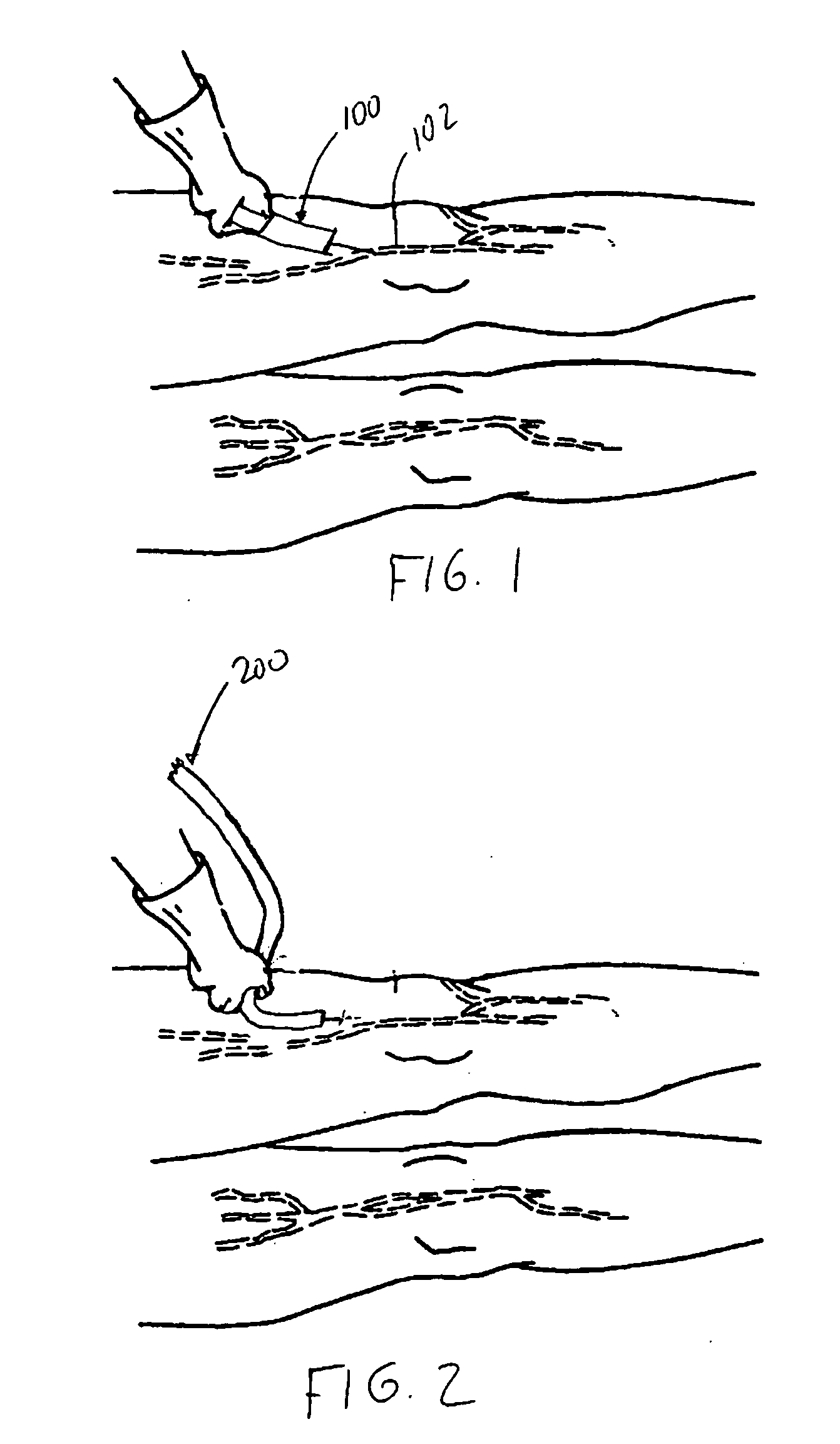Apparatus and methods for treating undesired veins
a technology of undesired veins and apparatuses, applied in the field of surgical equipment and procedures, can solve the problems of blood clots in veins, phlebitis or inflammation of the inside lining of the vein, and takes about 2-3 hours to complete, so as to improve the effect of sclerosing solution, and speed up the recovery tim
- Summary
- Abstract
- Description
- Claims
- Application Information
AI Technical Summary
Benefits of technology
Problems solved by technology
Method used
Image
Examples
Embodiment Construction
[0017] Before explaining the preferred embodiment in detail, it should be noted that the invention is not limited in its application or use to the details of construction and arrangement of parts illustrated in the accompanying drawings and description, because the illustrative embodiment of the invention may be implemented or incorporated in other embodiments, variations and modifications, and may be practiced or carried out in various ways. Furthermore, unless otherwise indicated, the terms and expressions employed herein have been chosen for the purpose of describing the preferred embodiment of the present invention for the convenience of the reader and are not for the purpose of limitation.
[0018] Referring now to the drawings in detail, and particularly to FIGS. 1-2, a surgical procedure for treating undesired veins, such as varicose and spider veins, of a patient will now be described. Although the procedure will be described in reference to a vein in a patient's leg, it will ...
PUM
 Login to View More
Login to View More Abstract
Description
Claims
Application Information
 Login to View More
Login to View More - R&D
- Intellectual Property
- Life Sciences
- Materials
- Tech Scout
- Unparalleled Data Quality
- Higher Quality Content
- 60% Fewer Hallucinations
Browse by: Latest US Patents, China's latest patents, Technical Efficacy Thesaurus, Application Domain, Technology Topic, Popular Technical Reports.
© 2025 PatSnap. All rights reserved.Legal|Privacy policy|Modern Slavery Act Transparency Statement|Sitemap|About US| Contact US: help@patsnap.com



